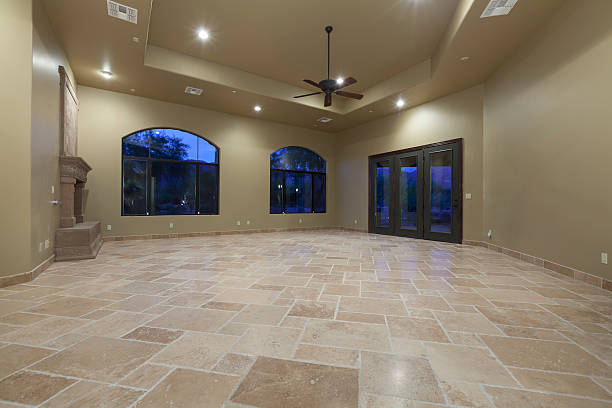The Essential Guide to Travertine Floor Repair: Tips and Techniques for Homeowners
Travertine, a type of limestone deposited by mineral springs, is a popular choice for flooring due to its distinctive style and durability. However, like all natural stone, travertine is prone to wear and tear over time, including scratches, etches, and cracks. Proper maintenance and timely repair are key to preserving its beauty and longevity. In this guide, we’ll explore the essentials of travertine floor repair, offering homeowners tips and techniques to ensure their flooring remains in pristine condition.
Understanding Travertine Flooring
Travertine is valued for its unique appearance, which includes natural pores and a wide range of colors. These characteristics, while aesthetically pleasing, can make the material susceptible to damage if not properly cared for.
Knowing the type of finish on your travertine (polished, honed, or brushed) is crucial for selecting the appropriate repair method.

Common Travertine Floor Issues and Solutions
Scratches and Small Etches
Minor scratches and etches can often be handled with DIY methods. For polished travertine, a marble polishing powder may be used to buff out imperfections. Apply the powder according to the manufacturer’s instructions, using a soft cloth to gently rub the affected area in a circular motion until the scratch disappears.
Cracks and Chips
Cracks and chips are more serious issues that may require professional assistance, especially if they span large areas or affect the structural integrity of the flooring. However, for small cracks and chips, a color-matched epoxy or resin can be applied. Carefully fill the damaged area with the adhesive, using a putty knife to smooth it over. Once dry, sand the area gently to ensure it is flush with the surrounding surface.
Cleaning and Sealing
Regular cleaning and sealing are crucial for maintaining the integrity of travertine flooring. For cleaning, use a soft cloth or mop and a cleaner specifically designed for natural stone. Avoid acidic cleaners, as they can etch the surface. Sealing the travertine can protect against stains and make future repairs easier. Choose a sealant appropriate for the type of finish on your travertine and apply it according to the manufacturer’s instructions.
Professional Travertine Repair Services
While many minor Travertine repairs can be managed on your own, significant damage may require the expertise of a professional like Total Floor Care. The Total Floor Care professionals can perform services such as grinding, honing, and polishing to restore your travertine floor to its original condition. They can also advise on the best care practices to prevent future damage.
Preventative Measures
To extend the life of your travertine flooring and minimize the need for repairs, consider the following tips:
- Use protective pads under furniture legs to prevent scratches.
- Immediately clean up spills to avoid staining.
- Place mats or rugs in high-traffic areas.
- Regularly inspect the floor for signs of damage and address them promptly.
Conclusion
Travertine flooring adds elegance and value to any home, but it requires proper care and maintenance to preserve its beauty. By understanding the basics of travertine floor repair and implementing preventative measures, homeowners can ensure their flooring remains stunning for years to come. Whether you choose to tackle minor repairs yourself or seek professional assistance for more significant issues, maintaining your travertine floor is an investment in the beauty and longevity of your home.
